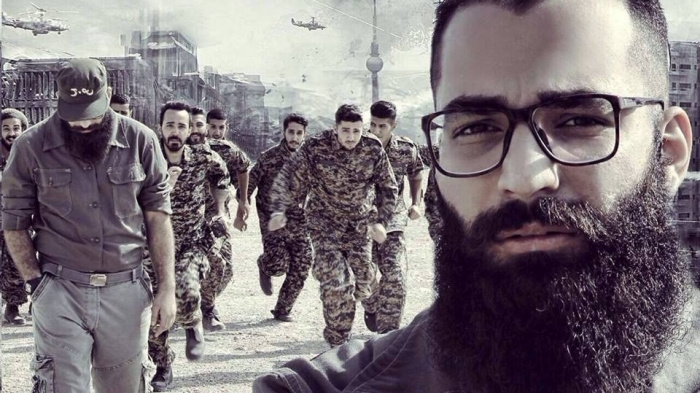Rapping the Way to Revolution

(Photo: Cover of the single track "Che" by Hamid Sefat, Iranian rapper)
Hessam Emami
The director of Islamic Republic of Iran Broadcasting (IRIB) Music Office says the state-run organization has produced three tracks, one in rap, one in pop, and one in fusion genre. These songs, with revolutionary and electoral themes, have been prepared for the occasion of the 37th anniversary of the Islamic Revolution and are slated for broadcast during and after the so-called Ten Days of Dawn, the national celebrations of the anniversary, until March 27, the day the twin polls of the parliament and the Assembly of Expert will be held.
“Rap is a vehicle the IRIB has put to good use,” Mohammad-Baqer Moallem told ISNA. “Productions inside IRIB has always been different from outside productions and a large gap was felt between what the organization produced and what the public needed. That is why a large part of IRIB’s productions did not receive a significant welcome,” Moallem added. This is one of the rare occasions in which the Iran’s state TV has recognized the musical genre of rap.
Moallem said production in the IRIB was "manufactured" in the past. “Technically, there was nothing wrong with it but the music had become static in contrast with the state-of-the-art mainstream. Nobody whispered IRIB’s songs, as people did in the past. The times have changed and the public does not spent three months with a single track,” he added.
“If what is appropriate is offered, it makes no difference if it is rap, pop or fusion,” he reiterated.
The works the Music Office has recently produced are being offered in new formats but their content is still justifiable, Moallem believes. “The three tracks share a theme of self-belief; that we should believe in ourselves because if we expect a hand from the West or the East for help, we will remain static forever and never progress,” he said.
After the Islamic Revolution, pop music was marginalized as many religious scholars in the establishment considered instrumental music forbidden because it was assumed to encourage dance or other 'worldly' joys. However, under President Mohammand Khatami’s reformist administration the Ministry of Islamic Culture and Guidance, in charge of authorizing cultural productions, recognized Persian pop music and the IRIB started broadcasting pop songs. The trend that has continued since then has significantly reduced, among Iranians, the popularity of a diaspora of pop singers, mainly based in Los Angeles.
Despite the breakthroughs in the recognition of pop music, rappers are still struggling to come out of their underground studios. A handful of rappers have been detained over the past one or two decades. However, they have seen several good signals from the establishment recently.
Perhaps it was not until in the midst of the nuclear talks, when a video surfaced up featuring Amirhossein Maghsoudloo, commonly known by his stage name Amir Tataloo, on an Iranian Navy warship, Damavand, that rappers felt they have come closest ever to be able to work legally in the country. The song, called “Energy-e Haste’ei” ("nuclear energy"), came as the first cooperation between Iranian officials and a rapper.
Rap in Iran is considered as a genre mainly dedicated to sociopolitical protest. Nonetheless, it seems that the genre’s prominent figures are seizing the opportunity for recognition through harmless content of their lyrics.

